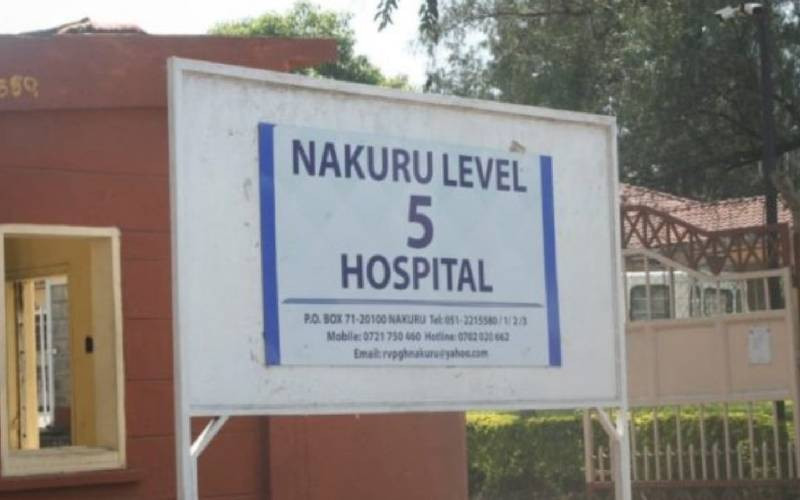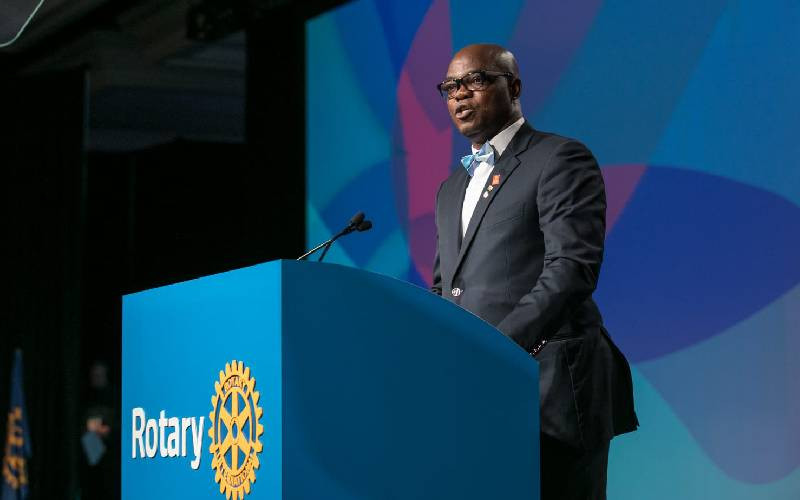
A dazzling smile is more than just an aesthetic asset—it can boost confidence, enhance self-esteem, and even improve oral health. Aesthetic dentistry, once considered a luxury, is now a mainstream solution for those looking to perfect their smiles.
From braces and implants to teeth whitening and veneers, the field has seen remarkable advancements, making treatments more accessible and effective than ever before.
Procedures such as braces, implants, crowns, fillings, teeth whitening, and clear aligners have become increasingly popular.
According to Dr Gladys Maina, a dental surgeon at Royal Smiles Dental Clinic, aesthetic dentistry has evolved significantly over the years and is now widely sought after.
“But while there are various reasons why one would opt for aesthetic dentistry, some are medical while others are purely aesthetic. Aesthetic dentistry falls within the same category as plastic surgery,” said Dr Maina during an interview at her clinic. She has been practising for 15 years.
Dr Maina explains that aesthetic dentistry is a branch of restorative dentistry focused on improving the appearance of teeth, smiles, and facial profiles.
Popular procedures
Procedures include white-coloured fillings, crowns that cover the chewing surface of teeth, and bridges that replace missing teeth. Crowns, which can be made of zirconium or porcelain, are custom-made to blend seamlessly with natural teeth.
- From gold to AI: The evolution of aesthetic dentistry
Keep Reading
“If a tooth is broken or needs reconstruction, a crown is designed to restore its function and appearance,” Dr Maina explains. “We reshape the tooth, take a mould, and create a replica in the lab that mimics a natural tooth.”
Another procedure is veneers, thin, shell-like coverings placed on the outer surface of teeth to enhance their appearance without fully covering them.
“They mostly cover the visible part of the teeth, allowing people to achieve what we call a ‘celebrity smile’,” Dr Maina says.
Teeth whitening, also known as bleaching, on the other hand can be done in a dental clinic or at home.
“In-office whitening takes about 20 to 45 minutes per session,” she says. “For take-home whitening, a doctor has to assess you first, then we create custom trays with special gels of varying acid concentrations, depending on the level of discolouration.”
Teeth alignment is commonly performed to correct crooked teeth. “This is necessary when upper canines or other teeth grow out of line, either towards the lips or cheeks,” Dr Maina explains.
Braces, the most well-known alignment tool, consist of brackets (metal or ceramic) connected by wires and elastics, which are adjusted every four to six weeks.
“Some people wear braces for temporary aesthetic reasons, but they are primarily meant to realign teeth,” she says.
Braces are suitable for children aged 10 to 12, teenagers, and even adults. However, for older individuals, clear aligners are a more discreet option.
These wires are made of Nickel and titanium and very elastic.
The other option, Dr Maina says is clear aligners, a modern alternative to braces. It involves custom-made, transparent trays that gradually shift teeth into alignment.
“These aligners are digitally designed after scanning the mouth. Unlike traditional braces, they don’t require brackets or wires,” Dr Maina says.
Patients wear aligners for 20 to 22 hours a day, removing them only for eating and cleaning. The treatment typically involves wearing a series of aligners, each for 10 to 14 days.
“The advantage is that they are invisible, allowing people to speak naturally while wearing them. With these you are in control as you can remove them as many times as you want and you don’t have to go to the dentist,” says Dr Maina, who just recently did the same treatment procedure for her lower jaw.
One can be able to see the expected outcome digitally even before he or she commit to having this treatment done.
Brands like Invisalign and ClearSmile are among the most popular options, with prices varying based on quality and budget.
If maintained well, artificial teeth can last between 20 to 30 years. However, poor gum health or infections can shorten their lifespan.
“If your gum health is poor or you develop decay or infections that compromise the health of your mouth then definitely, it will not last,” says Dr Maina,
She shares her personal experience: “I have had a crown for 13 years, and an implant for eight years, both of which are still intact.”
Implants involve drilling a titanium screw into the jawbone to replace missing teeth. “As long as proper diagnosis, preparation, and professional execution are followed, implants can last a lifetime,” she says.
Why consider aesthetic dentistry?One of the most common reasons for seeking aesthetic dentistry is tooth discolouration, often caused by fluorosis, trauma, or untreated cavities.
Trauma can cause someone to have broken teeth. When teeth are broken, they can be fixed, either using fillings, crowns or veneers depending on the extent of that breakage.
“If a tooth suffers trauma and is left untreated, it can die internally and darken over time,” Dr Maina explains.
Malaligned teeth—where teeth overlap, twist, or deviate—can also be corrected with braces, clear aligners, crowns, or veneers. Severe cavities may require restorative work such as fillings or crowns.
Additionally, if teeth have had cavities for a long time and a lot of the tooth structure is worn out because of decay, it can to be restored using either fillings or crowns.
Certain medical conditions, such as cleft palate or jaw tumours, may also necessitate aesthetic dentistry.
Some individuals opt for aesthetic dentistry purely for aesthetic reasons.
“Some people dislike the shape, size, or gaps in their teeth and want adjustments.”
“You can find a person who has a tooth that is too long or too wide and would want them to be split. Some of the teeth could be protruding. If the arrangement of your teeth is not pleasing to you, that can be corrected,” she says.
Others are influenced by celebrities and trends. “Some people want their teeth reshaped, while others desire a brighter smile through whitening or veneers,” she adds.
However, Dr Maina says others just want to look and feel better about themselves and these are the people who go for teeth bleaching or whitening or even veneers.
Tread with caution
Then we have other people taking up treatment just because it’s being done by others.
However, she cautions against procedures like “snap-on” teeth, which are temporary dental appliances not recommended by professionals. A snap on is a removable dental appliance made of a thin, durable resin that fits over one’s natural teeth, designed to cover imperfections.
“These can compromise oral hygiene and overall dental health,” she warns.
“So be wary of taking up procedures without visiting a qualified dental practitioner. It’s called snap on, snap off smile,” she says.
Another emerging aesthetic dentistry is teeth jewelry—small diamond-like adornments placed on teeth— that has gained popularity. However, Dr Maina urges caution.
“Before getting teeth jewellery, one must ensure their oral health is optimal, with no cavities or gum disease,” she advises.
She also warns against getting aesthetic procedures like teeth whitening at beauty spas. “Whitening is a sensitive medical procedure requiring a sterile environment and proper evaluation. Unsanitary conditions can lead to infections and complications,” she says.
“Going for a procedure that should be done in hospital at a salon, where you are not attended to by a professional, cost you more than seeking treatment from an expert,” she adds.
The Kenya Medical Practitioners and Dentists Council (KMPDC) sets minimum and maximum recommended prices for aesthetic dental procedures.
“For simple fillings, costs range from Sh7,000 upwards, though some charge as low as Sh4,000,” says Dr Maina.
Braces can cost Sh100,000 or more, while some online adverts promote cheaper options, which she advises against. “If someone is offering braces at Sh12,500, you need to question their qualifications,” she cautions.
Veneers can cost between Sh25,000 to Sh60,000 per tooth, depending on the clinic.
Teeth whitening costs from Sh7,000 to Sh15,000 while dental implants cost from Sh150,000 per tooth. She cautions Kenyans to check on the qualifications of the people performing procedures, since most of them are being done by quacks or auxiliaries in the dental set up, who ideally are not licensed.
She says quacks have taken advantage of the fact that many teenagers are going for braces, but they are being done at very cheaper rates, which are questionable.
Insurance gap
The dentist says cost is a major factor many people are not accessing aesthetic dentistry for medical reasons because it is not cheap.
Most private insurance companies do not cover aesthetic dental procedures, even when medically recommended.
“I am yet to come across a private insurance that covers aesthetic dentistry. Even when it’s medically recommended like teeth alignment, it will still be categorised under aesthetic work and insurances do not cover it. They need to reconsider,” she says
Public insurance coverage for dental services is also limited. The Social Health Authority (SHA) only covers up to Sh2,000 per household per year, an amount insufficient even for a consultation.
“SHA will only cover dental services from year two depending on availability of clinics that are willing to offer that service and the limit is a small at Sh2,000 per household per year.
That cannot even cover consultation. So it is a disservice, we are being shortchanged in the public health sector and even when National Health Insurance Fund(NHIF) was there, it was very restrictive.”
She says many counties are trying but are still grappling with shortage of staff, material and equipment.
Dr Maina calls for better policies, funding, and implementation to improve access to dental care in Kenya.
Less number of dentists is also an issue as currently, she says there exist only 1,400 registered ones with only two universities including University of Nairobi and Moi University training dental surgeons at degree level but still lack materials, funding and personnel.
She also highlights the need for more dental clinics, stating that her clinic, part of Royal Smiles Dental Clinic, aims to expand from seven counties to all 47.
With more awareness, policy reforms, and access to trained professionals, aesthetic dentistry can become an attainable solution for more Kenyans seeking to restore their smiles and enhance their confidence.
She says majority of the population need teeth cleaning and root canal treatment.
 The Standard Group Plc is a multi-media organization with investments in media
platforms spanning newspaper print
operations, television, radio broadcasting, digital and online services. The
Standard Group is recognized as a
leading multi-media house in Kenya with a key influence in matters of national
and international interest.
The Standard Group Plc is a multi-media organization with investments in media
platforms spanning newspaper print
operations, television, radio broadcasting, digital and online services. The
Standard Group is recognized as a
leading multi-media house in Kenya with a key influence in matters of national
and international interest.











